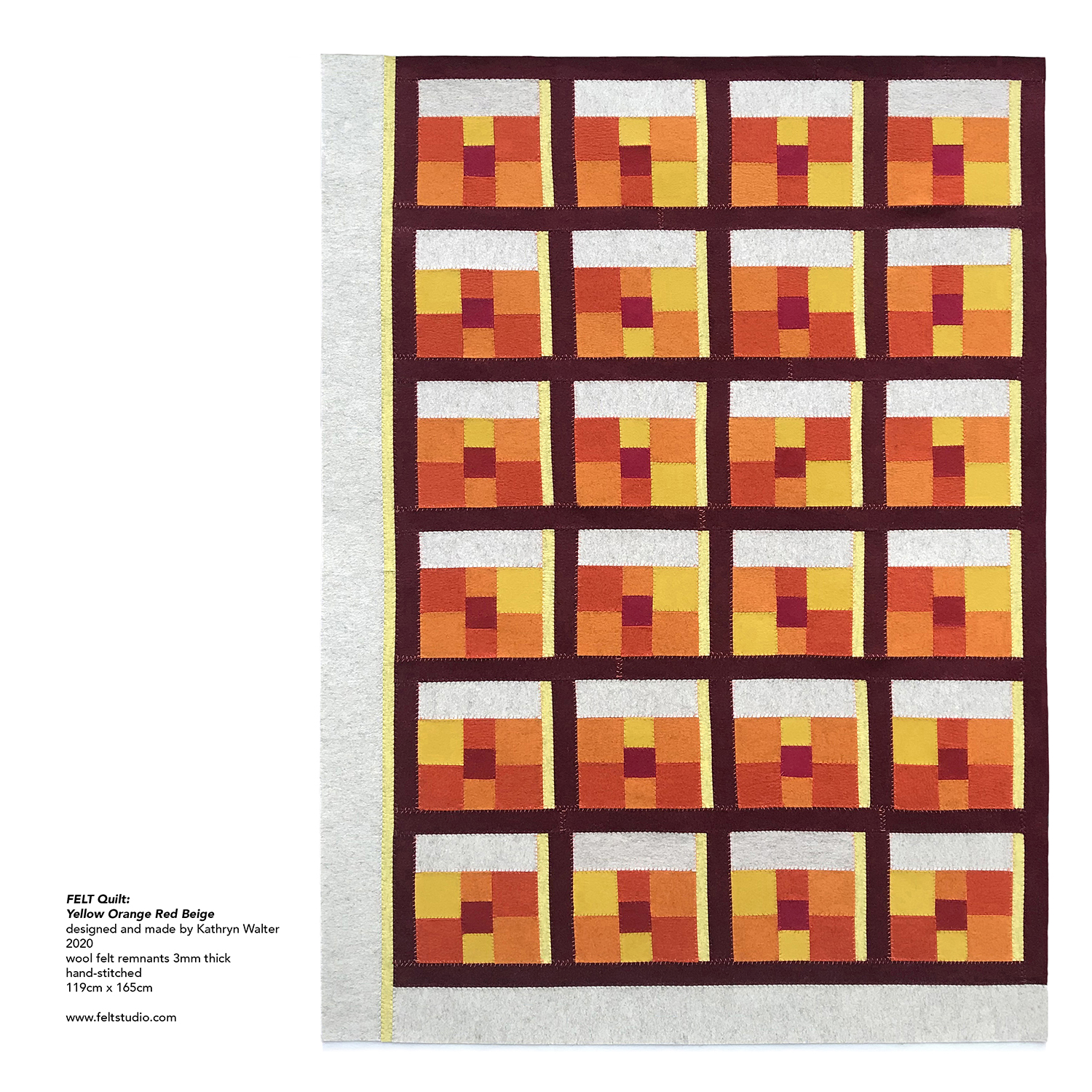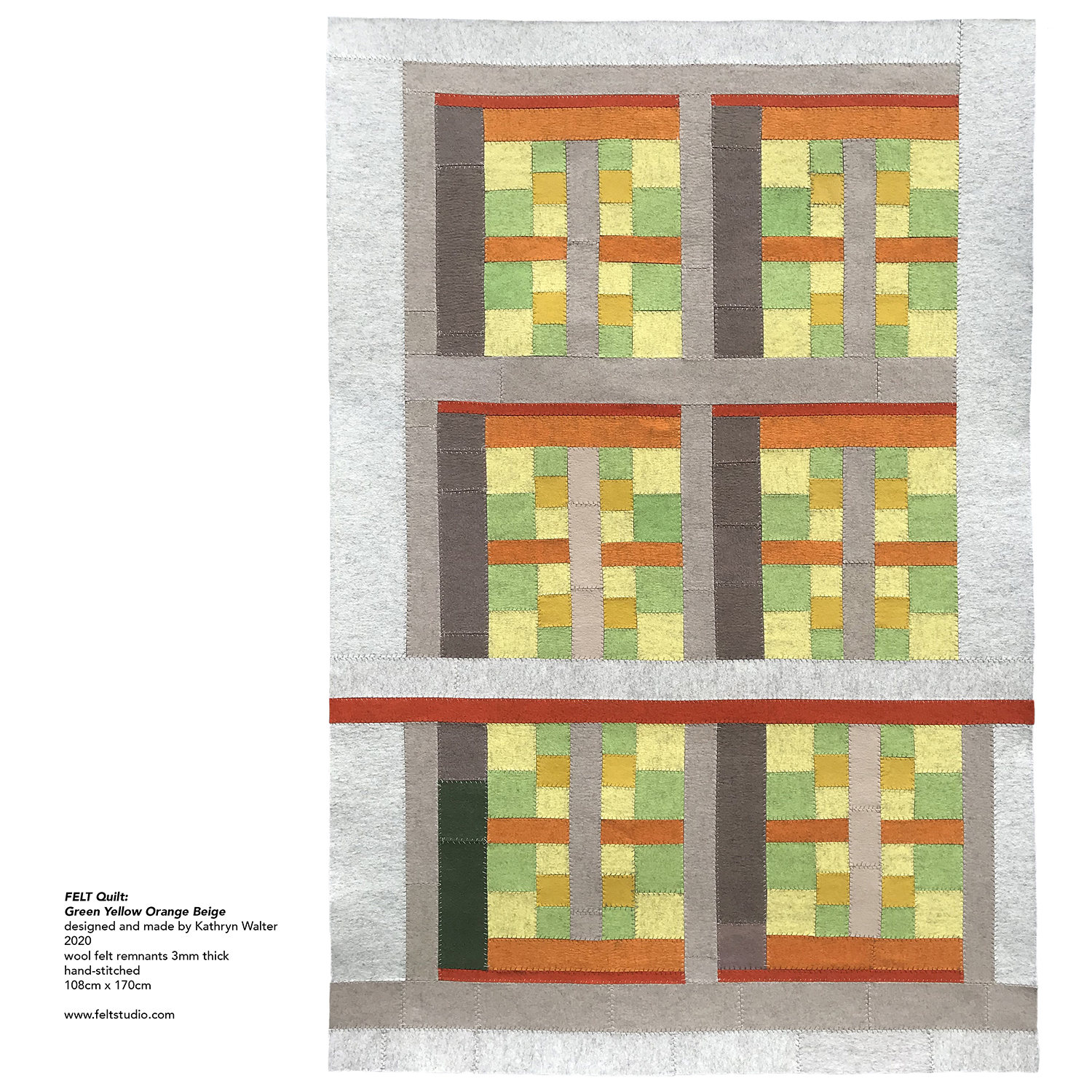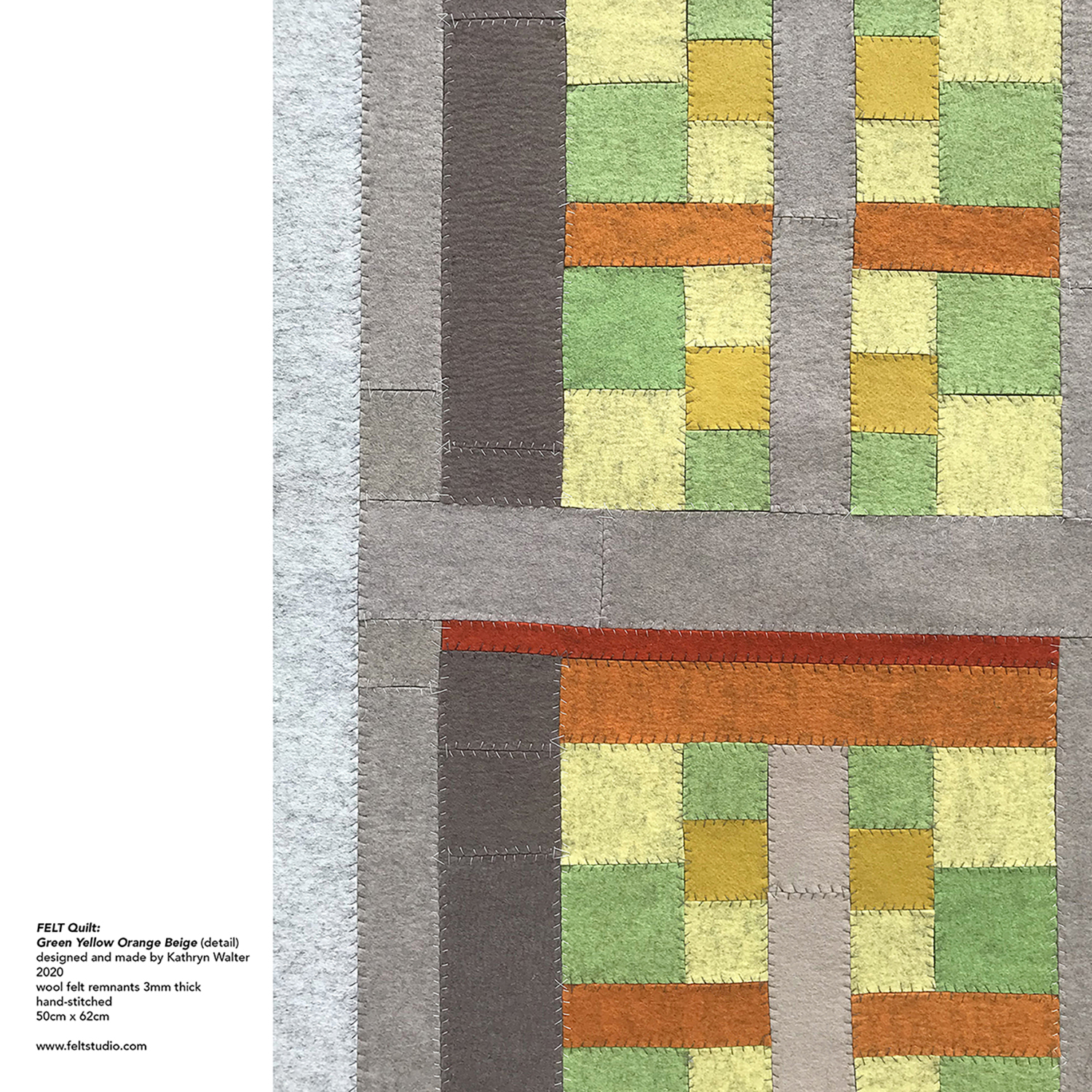About the Artist
I’ve maintained a studio practice since 1989, working at the intersections of art, craft and design. In 2000, I founded my studio and label FELT dedicated to modern manufactured felt as a medium to study form and as a means to express ideas, inspired by four generations of family history in the felt industry. With a focus on interior installations, I’ve collaborated with architects and interior designers across North America, and balance this work with projects and exhibitions that explore the culture of this unique material. Often working with basic geometries, I find creativity in the limits of form. My work has been exhibited at the Gardiner Museum, the Royal Ontario Museum, Textile Museum of Canada and Design Exchange in Toronto, and Cooper Hewitt National Design Museum in New York. In 2019, I received the Allied Arts Medal awarded by the Royal Architecture Institute of Canada.
About the Works
Through the Covid lockdowns, quilt-making resonated for me. Stitching coloured squares together has been a restorative process that evokes hopes for a future of systemic change after a devastating pandemic. Western culture is informed by perspectival systems based on the individual. The history of linear perspective begins with the assumption of a single point of view that positions “man” as the centre of all things, setting the standard for imperialistic ways of seeing.
Quilt-making is a way to develop a visual language that counters this tradition by directing the eye outward as it continually reinforces the picture plane. Like paintings, these quilts come together in an arrangement of form and colour through a process of building the whole. Squares of different colours form larger squares. Strips of different widths and other colours connect but also disrupt the sequence of squares. Tones and shapes create illusions of depth in patterns not quite patterns. Hand-stitched together, each piece varies slightly from one another. Odd pieces differ from the rest but are equal in value. Sometimes, one, just out of line, disturbs the grid system.
Like traditional quilts, these are built to a size resembling the human body. Made with remnants from FELT studio projects—offcut strips from installations and hand-cut squares from limited-run productions, they aim to direct the viewer away from a centre, integrate all forms, not so much in terms of inclusion but of equalization, within a frame that is not so much a border as it is an edge.





